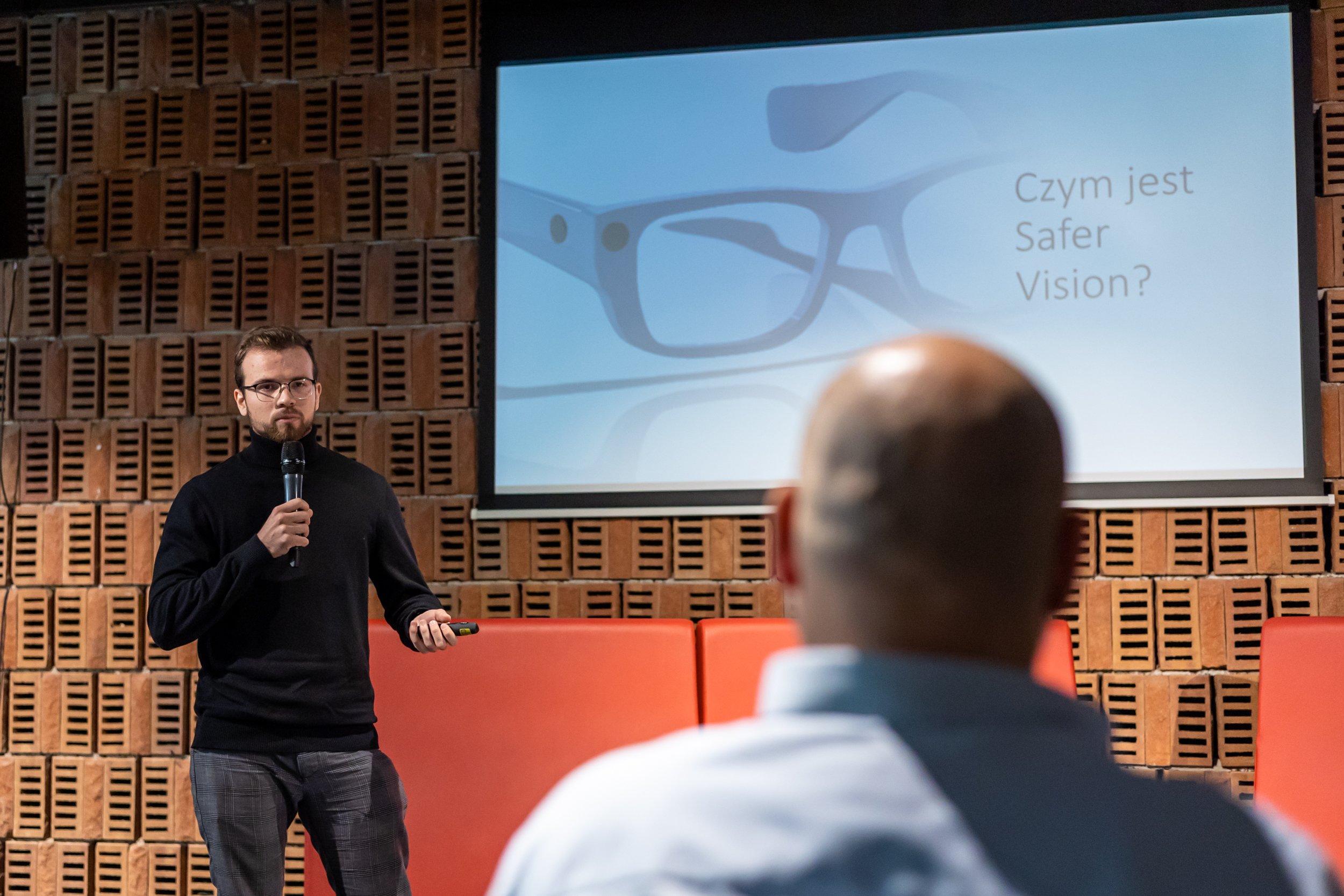What it does
Safer-visiON - intelligent glasses helping blind people to be more self-reliant during their daily activities in a city. The main functionalities are: warnings about obstacles in front of them, assistance in crossing the road and navigation.
Your inspiration
With a group of friends, we wanted to create something innovative that may help people in their life. During studies we have met a blind student and learned about the problems that blind people struggle with on daily basis. We wanted to create a solution that would help them in their routines, make their life easier, safer and more comfortable. We have observed that some of the most common activities in our life (i.e. going for an event, taking a bus) are not so easily available for blind people and we wanted to make them more accessible. We have consulted our ideas with the blind friend - her enthusiasm gave us a lot of motivation to work.
How it works
Safer-visiON glasses consist of a camera, a processor, a speaker, a small button and and a battery. Our goal is to make them solid, ergonomically designed, small and light. Along with the glasses comes a mobile application for configuration and with a navigation interface. There are a few main modes: navigation, warnings about obstacles on user’s path, helping with crossing the road, taking public transport, reading and scanning text. A user can combine different modes together and program a custom configuration for the button via mobile application. Image from the camera is processed by our custom trained AI model for object recognition. Depending on the chosen mode specific action is taken by the glasses - it can be, for example, warning about low hanging branches or bikes on the path. Warnings are announced via the speaker placed close to the user's ear, to make it as discrete as possible. The battery life is around 8 hours allowing for a whole day of usage.
Design process
We have created the first prototype for the university contest. It consisted of the same parts with additional microphone but its software functions were quite different. Two main modes were: recognizing all of the objects in front of the camera and describing the image to the user; looking for a specified (via user's microphone) object and navigating to it. After that we have conducted market research with bigger and diversified group of blind people (30 users). The conclusion was to focus on safety and navigation around the city. They pointed out their biggest problems and needs: obstacles on their path, finding a safe way to the cross the road and informing about the traffic lights, recognizing buses and their numbers, simplifying moving around the train station and informing about the bus/train stop the user has to leave at. Additionally people pointed out the need for a navigation system that would be more reliable for them. Therefore, in the second iteration (which is current) of our product we want to focus on these functionalities. We have resigned from the microphone, because the market research showed that users would feel uncomfortable talking to the glasses in public places and the feature of finding specified objects is not really desired.
How it is different
There are two main similar solutions on the market – Envision Glasses and OrCam MyEye. Our studies with blind people showed, that these products are extremely expensive, yet only have functionalities that can be easily found in free mobile applications. Their main features are: reading and scanning text, describing the scene, recognizing products, calling an assistant and finding objects. As mentioned, these functions can be found in free mobile apps like: BeMyEyes, SeeingAssistant, AssistantHome, SeeingEye and more. What is missing are the most important things for the end users: assistance in moving around the city, assistance in crossing the road, taking the public transport and navigation. These are the features we are going to implement in our solution.
Future plans
Our main goal is to become a successful start-up that will spread our solution to as many blind people as possible, to make their life safer, easier and more comfortable. We want to finish our prototype, test it with the end users and make it better based on their feedback. We will continue this process until we achieve a product that can be valuable and accessible, while being reliable and trustable at the same time. We calculated production costs: 70$ - 3D printed frame, 100$ camera, 75$ processor, 50$ - others, and the price of glasses around 1500$ we would be the most accessible solution on the market, while being extremaly profitable.
Awards
Winning the main prize of "IT is ME" contest. Krakow, 2022. Qualified to the pre-accelleration programme "STARTER - build your own start-up with us". - Krakow 2022/2023. Presenting and winning the audience award at the AGH Investor Day - 03/2023. Presenting at Open Day of Academic Entrepreneurship at AGH - 11/2023.



Connect